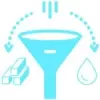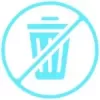Introduction
In a world where sustainability is no longer just a buzzword but a driving force for change, the concept of a circular economy is gaining popularity. But what exactly is a circular economy, and how can you make it a reality in your industry? Let’s explore this transformative approach and discover how ElectraMet is leading the charge towards circularity within industrial applications.
The EU’s Circular Economy Action Plan
The European Union has been at the forefront of promoting a circular economy. In March 2020, the European Commission unveiled its Circular Economy Action Plan (CEAP) as a pivotal component of the European Green Deal. This plan encompasses a holistic approach, targeting various stages of a product’s life cycle. It addresses product design, encourages circular processes, promotes sustainable consumption, and strives to eliminate waste.
Understanding the Circular Economy
The concept of a circular economy is gaining momentum globally as we collectively recognize the need for more sustainable practices. But what exactly is a circular economy? At its core, a circular economy represents a significant departure from the traditional linear economy, which follows a ‘take, make, dispose’ model. In contrast, a circular economy is designed to keep resources in use for as long as possible, extracting the maximum value from them during their lifespan. This shift represents a fundamental change in how we produce, consume, and dispose of goods.
The Importance of a Circular Economy
The significance of transitioning to a circular economy cannot be overstated. As the world faces escalating environmental challenges, such as climate change, resource scarcity, and biodiversity loss, adopting circular principles is becoming increasingly imperative. Not only does a circular economy reduce the strain on natural resources, but it also contributes to sustainable growth and job creation. Furthermore, it aligns with ambitious global targets, like the EU’s 2050 climate neutrality goal and efforts to halt biodiversity decline.
The Linear Economy Model
In the linear economy, products are designed, manufactured, used, and discarded, following a linear progression that ends with waste disposal. This model relies on a “take-make-dispose” approach, where resources are extracted, transformed into products, consumed, and eventually discarded as waste. Key characteristics of the linear model include:
- Resource Extraction: The linear economy heavily depends on continuous resource extraction to meet growing production demands. This practice places immense strain on the planet’s finite resources, leading to resource depletion.
- Short Product Lifespan: Products in the linear economy are often designed for a limited lifespan, contributing to premature disposal and waste generation.
- Waste Generation: The “dispose” phase of the linear model results in substantial waste generation, including both products and their byproducts.
Implications of the Linear Model
Understanding how the linear model operates unveils its profound implications:
- Resource Scarcity: Continuous resource extraction strains finite resources, leading to scarcity and increased competition for these valuable commodities.
- Environmental Degradation: Resource extraction and waste disposal contribute to habitat destruction, pollution, and greenhouse gas emissions, accelerating environmental degradation.
- Economic Vulnerability: Dependence on scarce resources makes economies vulnerable to price fluctuations and supply chain disruptions.
ElectraMet’s Role in Breaking the Linear Mold
ElectraMet plays a pivotal role in challenging the conventional linear economy model. We’ll illustrate how our innovative technology offers a transformative pathway toward circular practices, emphasizing selective recovery of valuable metals.
ElectraMet’s Contribution
ElectraMet stands at the forefront of reshaping the industrial landscape by providing innovative solutions that disrupt the linear economy’s status quo. Here’s how ElectraMet plays a game-changing role:
- Metal Recovery: Our cutting-edge technology specializes in the selective capture and recovery of metals from various waste and process streams. This approach marks a radical departure from the linear model’s “take-make-dispose” cycle.
- Circular Practices: ElectraMet empowers industries to embrace circularity by reclaiming metals, such as copper, and returning them to their purest form. This opens the door to their reuse or recycling, effectively eliminating the need for excessive resource extraction.
Environmental Benefits
ElectraMet’s technological prowess not only offers industries a competitive edge but also aligns seamlessly with sustainability objectives. Here’s a glimpse of the environmental benefits stemming from our solutions:
- Waste Reduction: By enabling the recovery of valuable metals, ElectraMet substantially reduces waste generation. This not only curtails landfill usage but also mitigates the environmental harm associated with waste disposal.
- Resource Conservation: Our technology conserves valuable resources by negating the need for fresh mining and resource extraction. This resource stewardship is crucial for ensuring the availability of these valuable commodities for future generations.
- Sustainable Resource Management: ElectraMet’s commitment to responsible resource management dovetails perfectly with the global shift toward sustainable practices. Our solutions empower businesses to make environmentally conscious choices while maintaining economic viability.
A Sustainable Future with ElectraMet
ElectraMet’s innovative approach aligns with the global shift towards circular economies and responsible resource management. By efficiently removing metals from industrial water and wastewater streams, we help businesses reduce the need for costly mining and mitigate the environmental impact. Our solution enables industries to meet sustainability goals, reduce their ecological footprint, and contribute to a more sustainable future.
Advantages of ElectraMet’s Technology

Discharge Compliance
Send us a sample of your process water to create an automated solution that will meet your specifications

Impurity Removal
Remove impurities while maintaining the integrity of your stream. Extract desired metals with selective recovery

Automated Process
Customizable automation via active monitoring for actionable insights. Improve processes, make adjustments upon request, and prevent process interruptions

Selective Metal Recovery
Take your aqueour metals from 10k ppm down to .2 ppm and recover the removed metals at 99.99% purity

Eliminate Waste
Go beyond eliminating chemical waste. Recycle process solutions, produce recyclable metal, and reduce labor and chemical costs

Asset Protection
Process transparency has never been simpler. Our ElectraLink technology allows us to alert your team when something goes wrong, so they can focus on production needs.
Conclusion
Like we mentioned before, a circular economy isn’t just a buzzword; it’s a path toward a sustainable future. ElectraMet’s groundbreaking technology plays a pivotal role in this transition, enabling industries to achieve circularity within their processes. By efficiently removing copper and other impurities, we help reduce waste, conserve valuable resources, and contribute to a more sustainable world. Feel free to read our blog posts on”A Deep Dive Into The Circular Economy” and “Copper Circularity Impact on ESG Reporting in Microelectronics.”
Ready to embark on the path to a more sustainable future? Contact ElectraMet today to explore how we can help your business achieve circularity, enhance sustainability, and preserve critical minerals!
